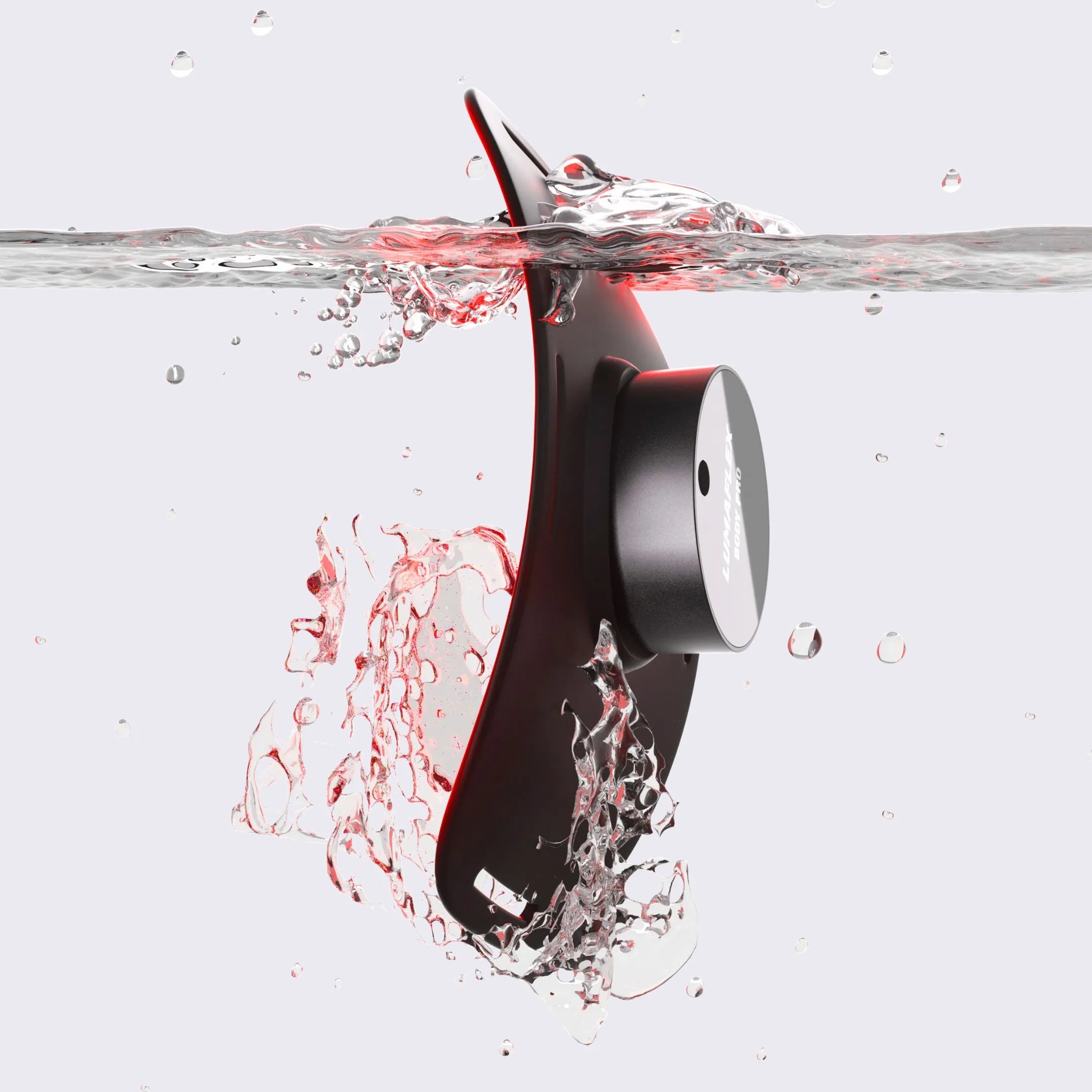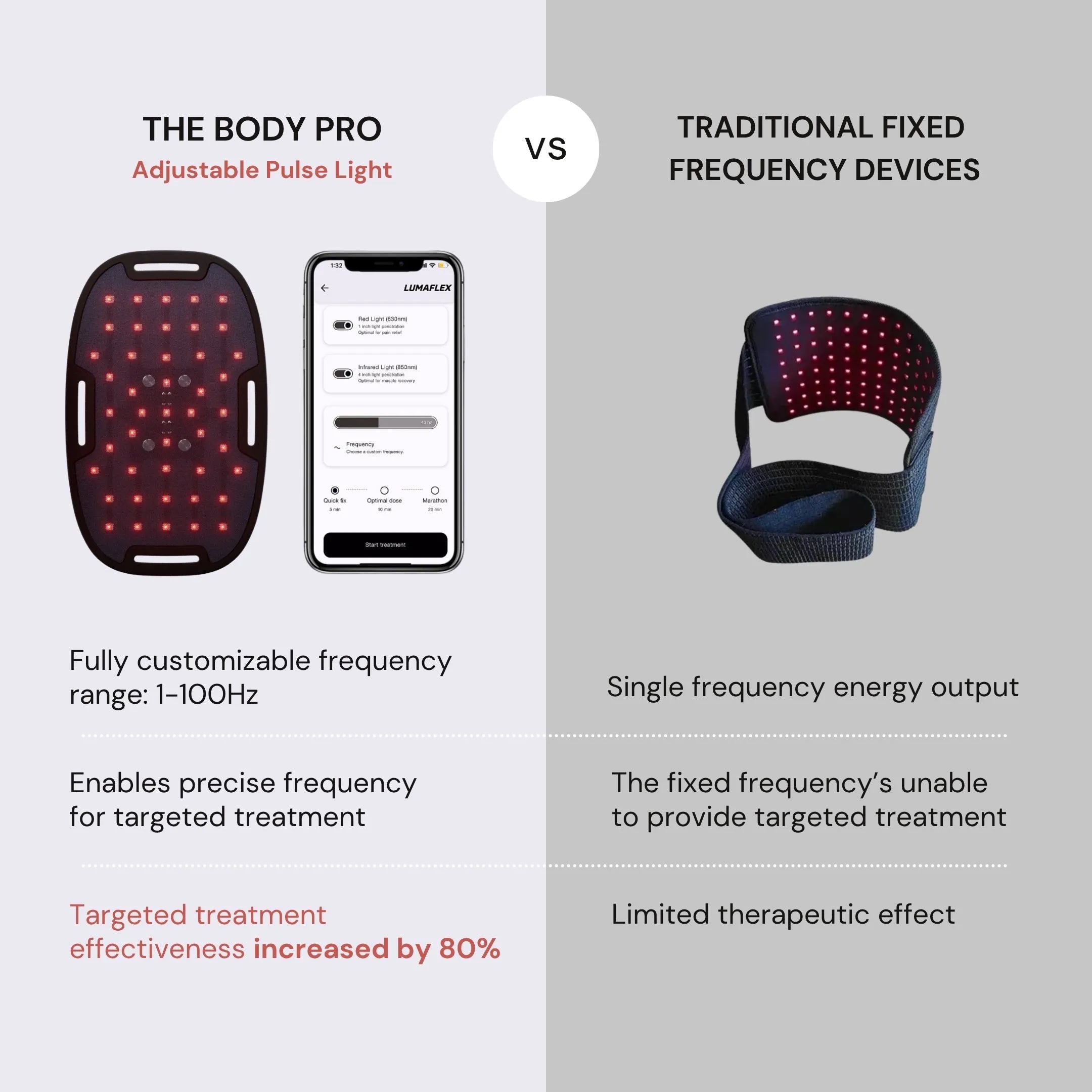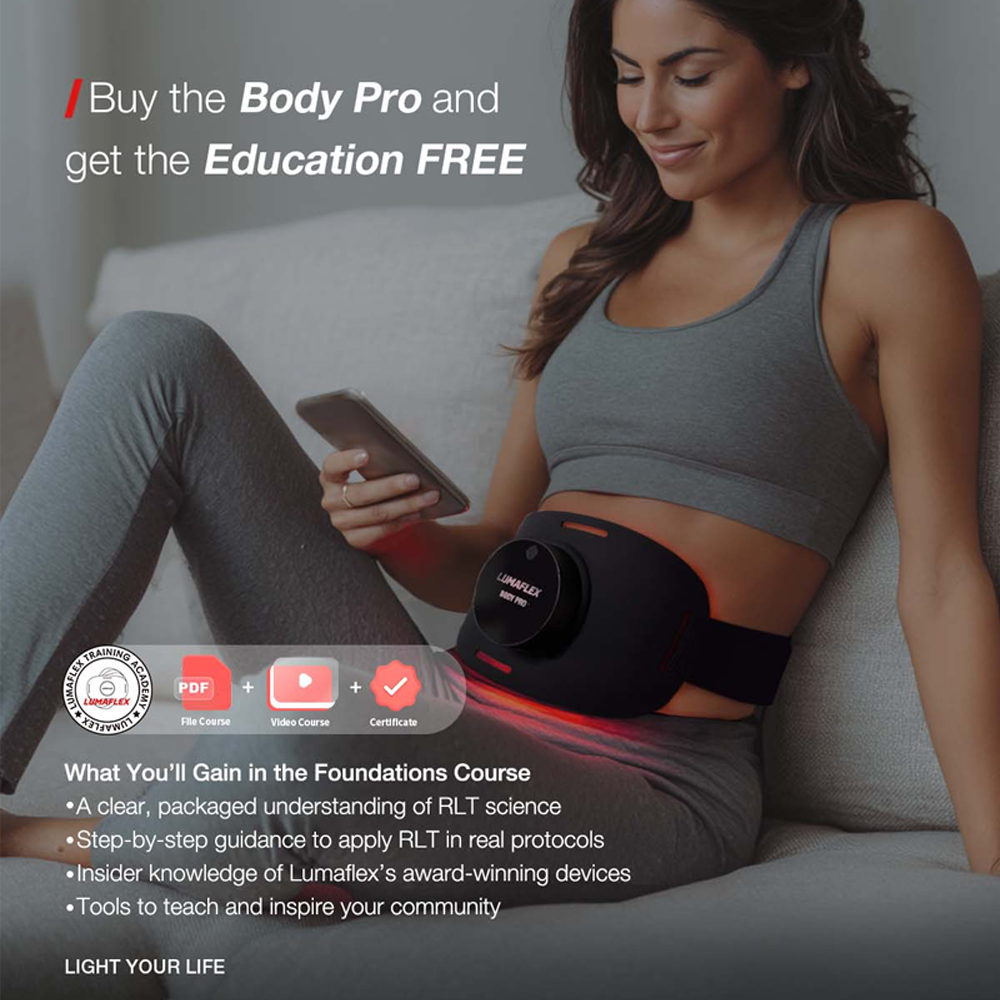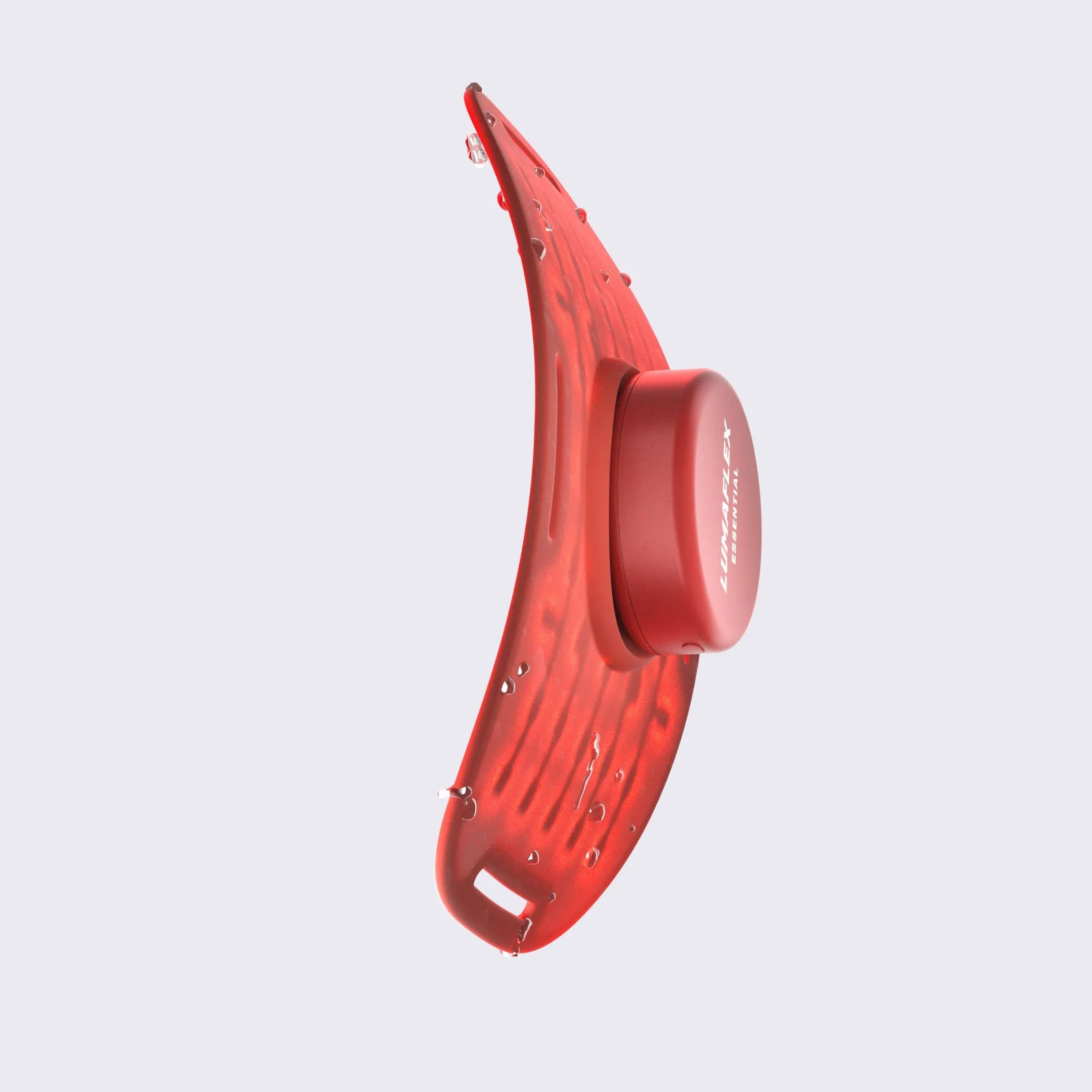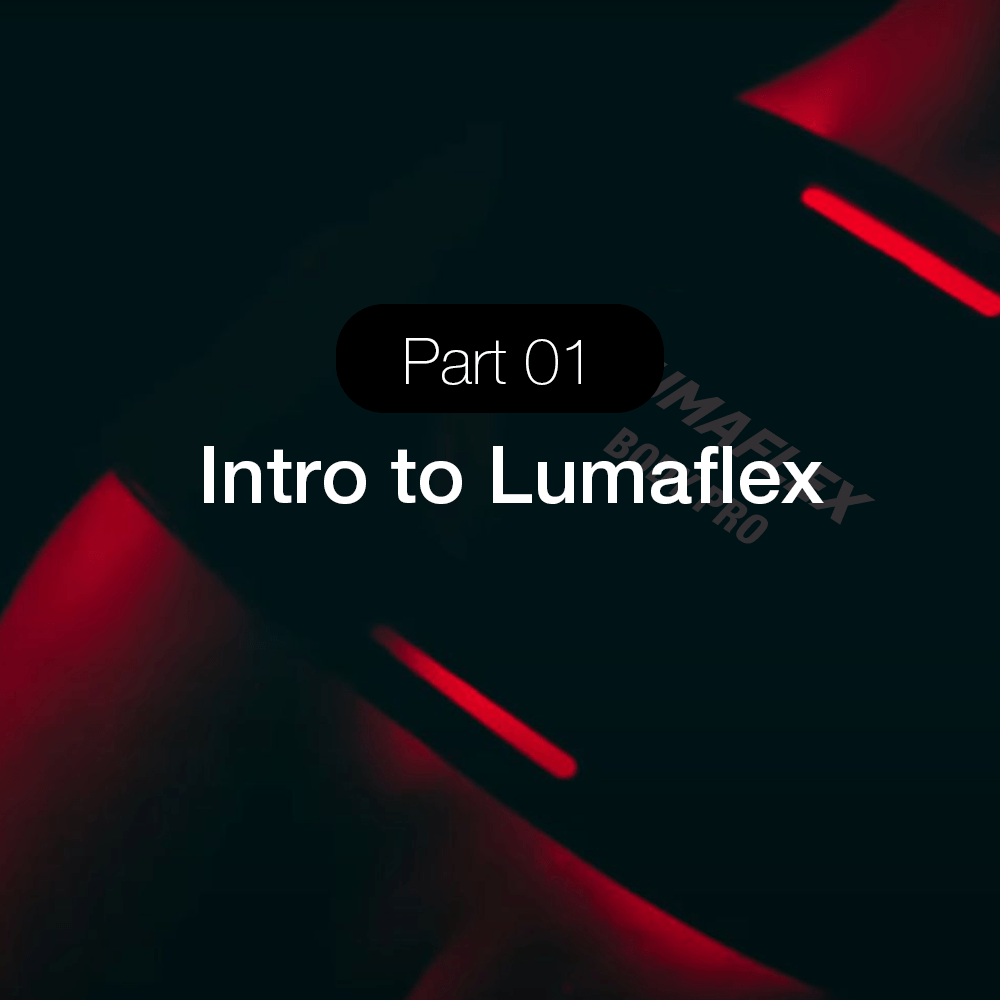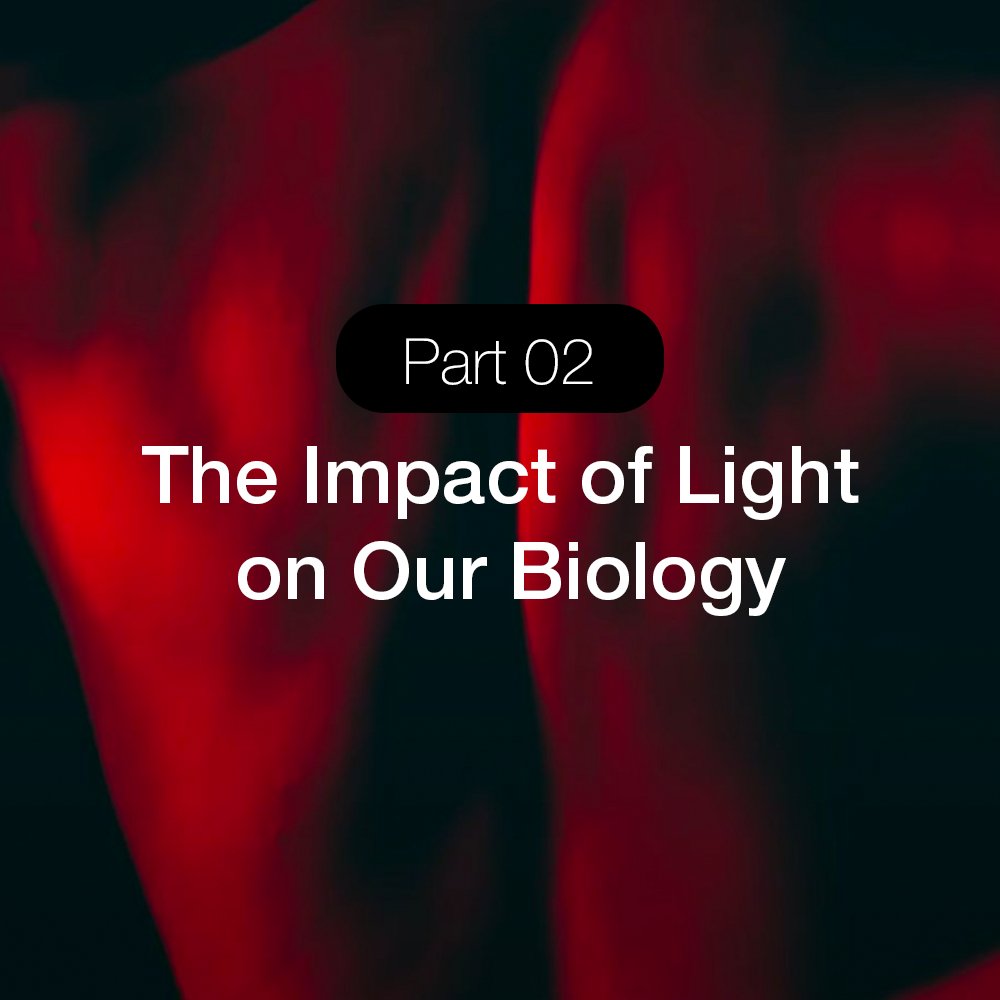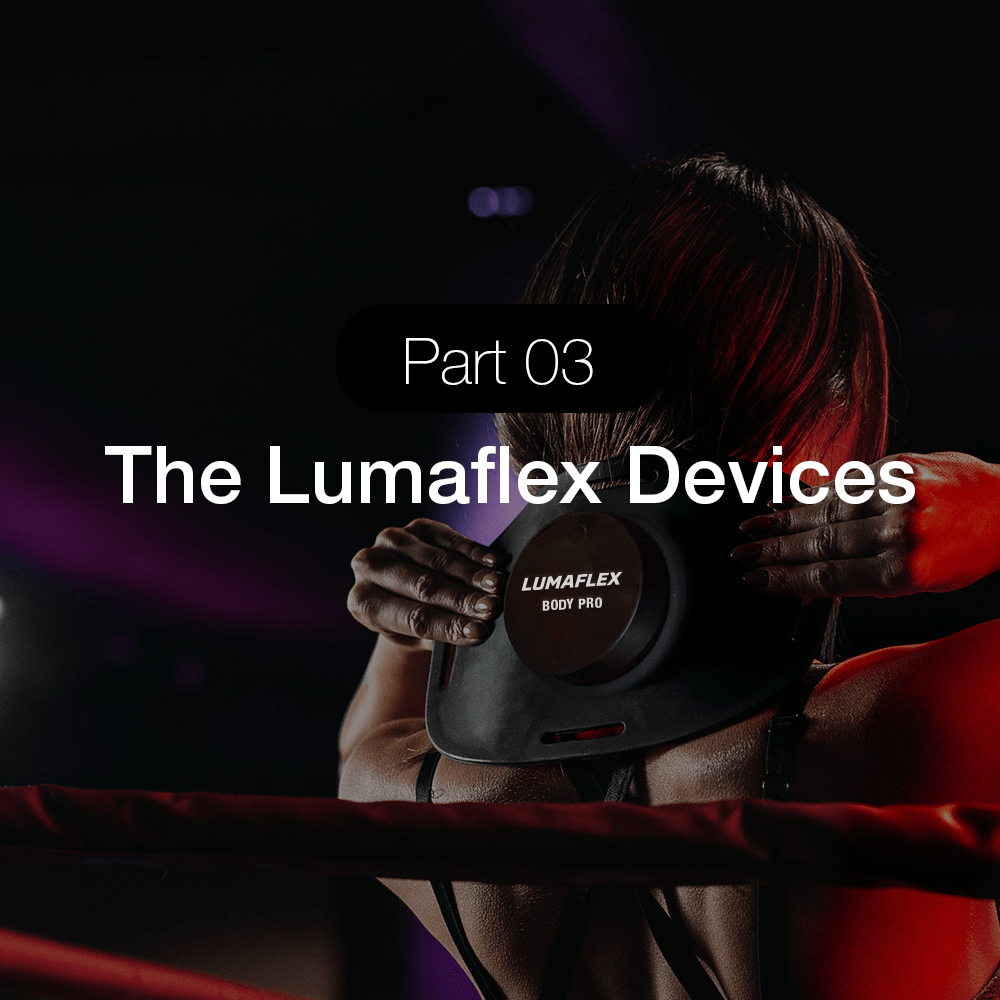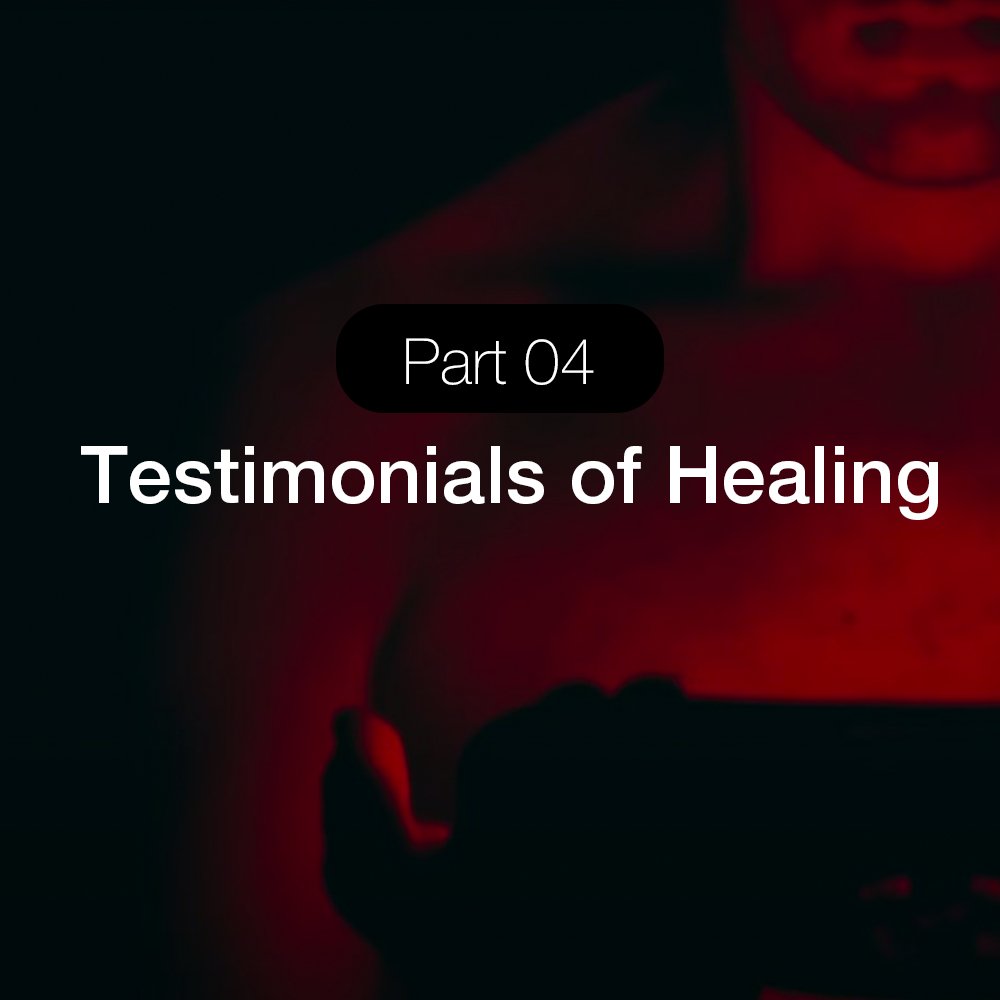Red Light Therapy for Pain 101: Benefits and How It Works
Tired of popping painkillers or icing sore muscles after every workout? Chronic back pain, joint stiffness, and post-exercise aches often outlast temporary fixes like pills and ice packs. Enter red light therapy for pain, a science-backed, drug-free solution that speeds recovery and soothes discomfort at the source. At Lumaflex, we've made clinical-grade red light therapy accessible for home use, empowering you to heal naturally. In this guide, discover how it reduces inflammation, boosts circulation, and offers lasting relief with no side effects required.
Table of content
How Red Light Therapy Works for Pain Relief
If you're tired of temporary fixes that merely mask pain, red light therapy (RLT) offers a revolutionary, drug-free approach that targets the root cause of discomfort. By harnessing specific wavelengths of red (630–660nm) and near-infrared (810–850nm) light, RLT penetrates deep into tissues to stimulate cellular repair, reduce inflammation, and accelerate healing—providing lasting relief without side effects.

The Science Behind Red Light’s Anti-Inflammatory Effects
Supercharges Cellular Energy (ATP Production)
RLT works at the mitochondrial level, energizing your cells’ powerhouses to produce more adenosine triphosphate (ATP)—the molecule that fuels tissue repair.
- Result: Faster healing of damaged muscles, tendons, and joints.
- Rationale: RLT increased ATP production by 150–200%, speeding recovery in chronic pain patients.
Reduces Inflammation at the Molecular Level
Inflammation is the root cause of most pain. RLT:
- Suppresses pro-inflammatory cytokines (like TNF-α and IL-6)
- Increases anti-inflammatory cytokines (like IL-10)
- Calms overactive immune responses (key for autoimmune-related pain)
Clinical Proof: Arthritis patients using RLT saw 62% less joint swelling vs. placebo (Arthoplasty Today, 2022).
Boosts Blood Flow & Oxygenation
RLT stimulates nitric oxide release, widening blood vessels to:
- Deliver more oxygen/nutrients to injured areas
- Flush out pain-inducing metabolic waste (e.g., lactic acid)
- Effect: Relieves muscle stiffness and accelerates post-workout recovery.
Triggers Natural Painkiller Release
RLT prompts the body to produce:
- Endorphins (natural pain relievers)
- Enkephalins (opioid-like compounds that block pain signals)
Why Athletes and Chronic Pain Sufferers Use Red Light Therapy
From pro athletes to desk workers with nagging back pain, more people are turning to red light therapy for its non-invasive, drug-free benefits. Whether you're recovering from a tough workout or managing daily discomfort, consistent use can speed up healing, improve mobility, and reduce reliance on pain meds.
- Speeds Muscle Recovery: Reduces DOMS (delayed-onset muscle soreness) by 48 hours vs. rest alone.
- Prevents Injuries: Strengthens tendons/ligaments by increasing collagen synthesis.
- Enhances Performance: Pro athletes like LeBron James use RLT pre/post-game.
Target pain at its source with Lumaflex's medical-grade red light technology, which is clinically proven to provide faster, longer-lasting relief.
Types of Pain Red Light Therapy Can Address
Red light therapy (RLT) is a natural, non-invasive treatment that uses low-wavelength red and near-infrared light to reduce inflammation, boost circulation, and accelerate healing. Whether you're dealing with chronic discomfort or acute pain, RLT can offer relief for a variety of conditions. Here’s a breakdown of the most common types of pain it can help manage:
Joint Pain (Arthritis, Knee/Shoulder Discomfort)
Stiff, achy joints from arthritis or overuse can make daily movements painful. Red light therapy:
- Reduces inflammation in joints.
- Stimulates cartilage repair.
- Eases stiffness in knees, shoulders, and hands. Studies suggest RLT may slow osteoarthritis progression, offering long-term relief.
Muscle Soreness & Post-Workout Recovery
Whether you're an athlete or a weekend warrior, muscle fatigue is inevitable. RLT helps by:
- Speeding up muscle repair.
- Lowering lactic acid buildup.
- Reducing delayed-onset soreness (DOMS). A 10–15-minute session post-workout can enhance recovery and get you back to training faster.
Back and Neck Pain and Sciatica Relief
Chronic back pain or sciatica (nerve pain radiating down the leg) often stems from inflammation or compressed nerves. RLT:
- Targets deep tissue inflammation.
- Improves spinal disc health.
- Relaxes tense muscles in the neck and lower back. Regular use may reduce reliance on pain medications.
Neuropathic Pain (Nerve Discomfort)
Nerve damage from conditions like diabetes or injuries can cause burning, tingling, or numbness. Red light therapy:
- Encourages nerve regeneration.
- Calms overactive pain signals.
- Improves microcirculation of damaged nerves.
Menstrual and Abdominal Pain Relief for Women
For women dealing with cramps or endometriosis-related pain, RLT offers a drug-free alternative:
- Relaxing uterine muscles.
- Reducing prostaglandins (pain-triggering compounds).
- Improving blood flow to the pelvic region.
Customize your pain relief—explore Lumaflex's flexible, full-body treatment options to find the right red light therapy solution for your needs.
How Long Until You Feel Pain Relief?
One of the biggest questions about red light therapy is how soon it will work. The answer depends on your type of pain and treatment consistency. Below is a detailed breakdown of what to expect, supported by research and user experiences.
Immediate Soothing Effects After First Use
Many notice relief right away—especially with acute pain or inflammation. Here's what a single session can provide:
| Effect | Duration | Best For |
| Reduced muscle tightness | 1-4 hours | Post-workout soreness |
| Warming, soothing sensation | During session | Joint stiffness |
| Temporary pain relief | 2-6 hours | Arthritis flare-ups |
Tip: For acute pain, use RLT right after activity or at peak discomfort.
Cumulative Benefits: 2–4 Weeks of Consistent Use
For lasting results, 3-5 weekly sessions are ideal. Here's the progression:
| Week | Benefits | Clinical Support |
| 2-Jan | Decreased inflammation | Study on tendonitis |
| 4-Mar | Improved joint mobility | Arthritis Foundation findings |
| 4+ | Reduced pain medication use | Patient-reported outcomes |
Key Insight: 80% of users report measurable improvement by week 4 when using RLT for chronic joint pain.
Long-Term Management for Chronic Conditions
For persistent pain (e.g., neuropathy, sciatica), consistency yields the best results:
| Timeframe | Expected Outcome | Maintenance Tips |
| 3 months | 40-60% pain reduction | 2-3 sessions/week |
| 6 months | Nerve regeneration signs | Combine with physical therapy |
| 1 year | Sustained symptom control | Monthly "tune-up" sessions |
Pro Tip: Track your progress with a pain journal to optimize session frequency and duration.Ready for lasting relief? Explore customizable RLT plans tailored to your pain type and schedule.

Professional vs. At-Home Red Light Therapy
When exploring red light therapy for pain, two main options are available: professional red light therapy treatments at clinics or at-home red light therapy devices. Both approaches use red and near-infrared wavelengths to reduce inflammation, promote healing, and manage chronic pain but they differ in cost, convenience, and accessibility.
Professional Red Light Therapy
Clinical treatments are administered by trained professionals using high-powered, often specialized equipment. These sessions may be ideal for:
- Severe or complex pain conditions
- Post-surgical recovery under supervision
- Patients needing guided, expert care
However, professional sessions typically cost between $50 to $150 per visit, and require scheduling, travel, and ongoing expense.
At-Home Red Light Therapy with Lumaflex
For most people seeking long-term pain relief, at-home red light therapy devices like Lumaflex offer a more practical and affordable solution. Benefits include:
- On-demand access to therapy—no appointments or travel needed
- Cost-effective—a one-time investment pays for itself after a few uses
- Daily consistency, which is critical for lasting pain relief
- FDA-cleared medical-grade red and near-infrared light
- Flexible design targets muscles, joints, and deeper inflammation
- Ideal for managing arthritis, chronic back pain, muscle recovery, and more
Optimize Your Red Light Therapy Routine
To get the best results from your at-home red light therapy device, consider:
- Keeping a pain journal to track session timing, duration, and pain levels
- Creating a customized treatment plan based on your symptoms and lifestyle
- Consulting with a healthcare provider or red light therapy specialist for guidance
Why At-Home Devices Are the Smart Choice
While professional red light therapy may be suitable for specific conditions, at-home solutions offer unmatched flexibility and value. Lumaflex combines the power of clinical-grade light with the convenience of home use making it one of the top choices for effective, medication-free pain relief at home.
FAQs About Red Light Therapy
Many people exploring natural pain relief options have questions about red light therapy. Here, we address some of the most common concerns to help you understand how to use this treatment safely and effectively.
Is Red Light Therapy Safe for Sensitive Areas?
Red light therapy is generally considered safe for sensitive areas when used properly. The treatment is non-invasive and doesn't generate heat, making it suitable for delicate regions like the face (for TMJ pain), hands, and feet (for arthritis), or areas recovering from surgery (once incisions have fully healed).
However, it's important to use lower intensity settings for sensitive areas and limit sessions to 5-10 minutes. Always protect your eyes with specialized goggles during treatment, and avoid using red light therapy on open wounds or broken skin.
Can You Overuse Red Light Therapy?
While red light therapy has an excellent safety profile with no known serious side effects, there is such a thing as too much of a good thing. The treatment works by stimulating cellular activity, and your body needs time between sessions to respond and recover. Most users find 10-20 minutes per treatment area, 3-5 times per week, is optimal for chronic pain.
Signs you might be overdoing it include temporary skin warmth, diminished returns in pain relief, or rare cases of mild fatigue. Unlike some pain treatments where more frequent use equals better results, red light therapy works best when used consistently but moderately.
How Does It Compare to Painkillers or Ice Packs?
Red light therapy offers a fundamentally different approach to pain management compared to traditional options. While painkillers like NSAIDs work by blocking pain signals and reducing inflammation chemically, and ice packs provide temporary numbing relief by constricting blood vessels, red light therapy stimulates the body's natural healing processes at the cellular level. It doesn't just mask symptoms - it helps address underlying causes of pain by reducing inflammation, increasing circulation, and promoting tissue repair.
Many users find it most effective when combined strategically with other treatments: using ice for acute swelling immediately after injury, then transitioning to red light therapy as part of the healing process while reserving painkillers for breakthrough pain. The advantage of red light therapy is its ability to provide drug-free relief without the side effects or dependency risks associated with long-term medication use.
Conclusion
Red light therapy offers a natural, non-invasive solution for common conditions like arthritis, muscle soreness, and nerve pain. It is backed by science to reduce inflammation and accelerate cellular repair. For best results, consistency is key: just 10 minutes daily for 3+ weeks can make a noticeable difference.
What sets Lumaflex apart? Unlike generic devices, our red light therapy systems feature adjustable intensity and full-body coverage, ensuring targeted relief tailored to your needs.
Related Posts
- Men’s Health Issues at Work: The Hidden Cardiovascular Crisis
- Yoga and Pilates, Elevated: The Future of Mindful Movement
- Pulsed Red Light Therapy for Menstrual Cramps
- How Guided Meditation for Healing Works with Red Light Therapy
- Red Light Therapy for Pain: For Menstrual Discomfort Relief
- Red Light Therapy Time: A Guide for Abdominal Cramping After Exercise
- Red Light Therapy for Feet: Relief for Neuropathy & Toe Pain
- Before You Sweat: Red Light Therapy for Athletes is the New Hit
- Feeling Knotted? How Red Light Therapy for Muscle Recovery Can Help Athletes
- How Red Light Therapy Can Help Alleviate Stomach Pain and Discomfort
- A Homemaker's Guide to Using Portable Red Light Therapy for Pain Relief






